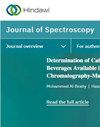基于多时极坐标合成孔径雷达和光学遥感数据的高山草甸地区土壤含水量协同反演
IF 2.1
4区 化学
Q4 BIOCHEMICAL RESEARCH METHODS
引用次数: 0
摘要
土壤含水量是研究和实践中的一个重要环境参数,但在有植被覆盖的干旱地区,各种技术和环境因素限制了对其的估算。本研究结合 Sentinel-1 和 Landsat 8 的多时相遥感数据,对青藏高原中部那曲地区低植被覆盖下的地表土壤含水量进行了反演研究。从光学遥感数据中提取了四个植被指数(NDVI、ARVI、EVI 和 RVI)。利用水云模型消除了植被层对植被覆盖反向散射系数的影响,并构建了适合那曲地区的预测模型。水云模型有效地纳入了植被指数,而不是植被含水量。我们发现 VV 偏振比 VH 偏振更适合土壤含水量反演。在四种植被指数中,在 VV 极化条件下用 RVI 构建的土壤含水量反演模型的拟合效果最好(R2 = 0.8212;RMSE = 6.30)。植被含水量-NDVI 的拟合度次之(R2 = 0.8201)。无论使用哪种植被指数,土壤含水量反演模型的 R2 都为 0.6,但 RVI 的拟合效果最好,这表明该植被指数在水云模型中的适用性很高,可替代植被含水量,预计在类似的研究地点也会有很好的表现。本文章由计算机程序翻译,如有差异,请以英文原文为准。
Collaborative Inversion of Soil Water Content in Alpine Meadow Area Based on Multitemporal Polarimetric SAR and Optical Remote Sensing Data
Soil water content is a critical environmental parameter in research and practice, though various technological and contextual constraints limit its estimation in arid areas with vegetation cover. This study combined the multitemporal remote sensing data of Sentinel-1 and Landsat 8 to conduct an inversion study on surface soil water content under low vegetation cover in Nagqu, central Tibetan Plateau. Four vegetation indices (NDVI, ARVI, EVI, and RVI) were extracted from optical remote sensing data. A water cloud model was used to eliminate the influence of the vegetation layer on the backscattering coefficient associated with vegetation cover, and a predictive model suitable for the Nagqu area was constructed. The water cloud model effectively incorporated a vegetation index instead of vegetation water content. We found that VV polarization was more suitable for soil water content inversion than VH polarization. Among the four vegetation indices, the soil water content inversion model constructed with RVI under VV polarization had the best fit (R2 = 0.8212; RMSE = 6.30). The second-best fit was observed for vegetation water content-NDVI (R2 = 0.8201). The soil water content inversion models all had an R2 > 0.6, regardless of the vegetation index used, though the RVI had the best fitting effect, indicating that this vegetation index is highly applicable in the water cloud model, as a substitute for vegetation water content, and is expected to perform well in similar study sites.
求助全文
通过发布文献求助,成功后即可免费获取论文全文。
去求助
来源期刊

Journal of Spectroscopy
BIOCHEMICAL RESEARCH METHODS-SPECTROSCOPY
CiteScore
3.00
自引率
0.00%
发文量
37
审稿时长
15 weeks
期刊介绍:
Journal of Spectroscopy (formerly titled Spectroscopy: An International Journal) is a peer-reviewed, open access journal that publishes original research articles as well as review articles in all areas of spectroscopy.
 求助内容:
求助内容: 应助结果提醒方式:
应助结果提醒方式:


